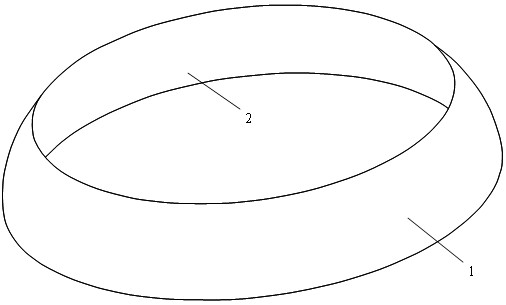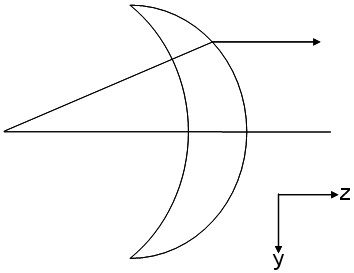Lens type antenna housing
A radome and lens technology, applied in the field of radomes, can solve the problems of inability to form an omnidirectional antenna array, increase the beam width, and decrease the gain, and achieve the effects of simple structure, increased gain, and easy processing.
- Summary
- Abstract
- Description
- Claims
- Application Information
AI Technical Summary
Problems solved by technology
Method used
Image
Examples
Embodiment Construction
[0015] Such as figure 1 , 2 As shown, the lens radome is a hollow ellipsoid table, the outer surface 1 of the lens radome is ellipsoid, the inner surface 2 of the lens radome is spherical, the longitudinal section of the lens radome is half crescent, and the lens The wall thickness of the type radome gradually decreases from bottom to top. The lens radome of this structure can be regarded as a crescent lens in each longitudinal section.
[0016] Such as image 3 As shown, the inner surface of the crescent lens is circular, and the outer surface is elliptical. It belongs to a single refraction surface lens, and its refraction occurs on the outer surface, and the inner surface is normal incidence. Its geometric shape is determined by the following formula (in Cartesian coordinate system):
[0017] Outer Surface: Oval
[0018] Inner surface: round
[0019] in
[0020]
[0021]
[0022] D is the diameter of the crescent lens, and f is the focal length of the cre...
PUM
 Login to View More
Login to View More Abstract
Description
Claims
Application Information
 Login to View More
Login to View More - R&D
- Intellectual Property
- Life Sciences
- Materials
- Tech Scout
- Unparalleled Data Quality
- Higher Quality Content
- 60% Fewer Hallucinations
Browse by: Latest US Patents, China's latest patents, Technical Efficacy Thesaurus, Application Domain, Technology Topic, Popular Technical Reports.
© 2025 PatSnap. All rights reserved.Legal|Privacy policy|Modern Slavery Act Transparency Statement|Sitemap|About US| Contact US: help@patsnap.com



